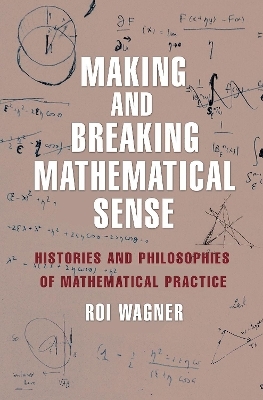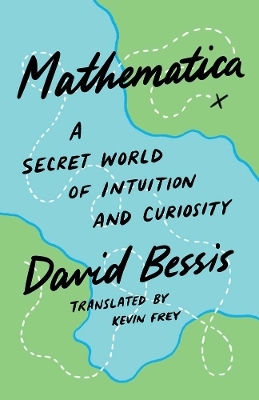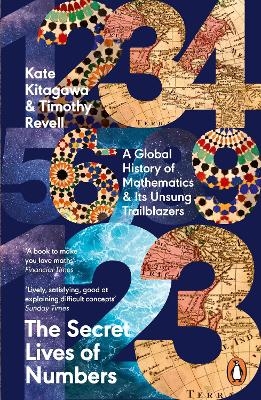
Making and Breaking Mathematical Sense
Princeton University Press (Verlag)
978-0-691-17171-5 (ISBN)
It focuses on the contingent semiotic and interpretive dimensions of mathematical practice, rather than on mathematics' claim to universal or fundamental truths, in order to explore not only what mathematics is, but also what it could be. Along the way, Wagner challenges conventional views that mathematical signs represent fixed, ideal entities; that mathematical cognition is a rigid transfer of inferences between formal domains; and that mathematics' exceptional consensus is due to the subject's underlying reality. The result is a revisionist account of mathematical philosophy that will interest mathematicians, philosophers, and historians of science alike.
Roi Wagner is a research fellow at the Minerva Humanities Center at Tel Aviv University, where he earned PhDs in both mathematics and the history and philosophy of science. He is the author of S(Zp,Zp): Post-Structural Readings of Godel's Proof and a coeditor of Sourcebook in the Mathematics of Medieval Europe and North Africa (Princeton).
Acknowledgments xi Introduction 1 What Philosophy of Mathematics Is Today 1 What Else Philosophy of Mathematics Can Be 3 A Vignette: Option Pricing and the Black-Scholes Formula 6 Outline of This Book 10 1: Histories of Philosophies of Mathematics 13 History 1: On What There Is, Which Is a Tension between Natural Order and Conceptual Freedom 14 History 2: The Kantian Matrix, Which Grants Mathematics a Constitutive Intermediary Epistemological Position 22 History 3: Monster Barring, Monster Taming, and Living with Mathematical Monsters 28 History 4: Authority, or Who Gets to Decide What Mathematics Is About 33 The "Yes, Please!" Philosophy of Mathematics 37 2: The New Entities of Abbacus and Renaissance Algebra 39 Abbacus and Renaissance Algebraists 39 The Emergence of the Sign of the Unknown 40 First Intermediary Reflection 45 The Arithmetic of Debited Values 46 Second Intermediary Reflection 51 False and Sophistic Entities 53 Final Reflection and Conclusion 56 3: A Constraints-Based Philosophy of Mathematical Practice 59 Dismotivation 59 The Analytic A Posteriori 63 Consensus 67 Interpretation 72 Reality 81 Constraints 84 Relevance 90 Conclusion 97 4: Two Case Studies of Semiosis in Mathematics 100 Ambiguous Variables in Generating Functions 101 Between Formal Interpretations 101 Models and Applications 107 Openness to Interpretation 109 Gendered Signs in a Combinatorial Problem 112 The Problem 112 Gender Role Stereotypes and Mathematical Results 116 Mathematical Language and Its Reality 120 The Forking Paths of Mathematical Language 122 5: Mathematics and Cognition 128 The Number Sense 129 Mathematical Metaphors 137 Some Challenges to the Theory of Mathematical Metaphors 142 Best Fit for Whom? 143 What Is a Conceptual Domain? 146 In Which Direction Does the Theory Go? 150 So How Should We Think about Mathematical Metaphors? 154 An Alternative Neural Picture 156 Another Vision of Mathematical Cognition 163 From Diagrams to Haptic Vision 164 Haptic Vision in Practice 171 6: Mathematical Metaphors Gone Wild 177 What Passes between Algebra and Geometry 177 Piero della Francesca (Italy, Fifteenth Century) 178 Omar Khayyam (Central Asia, Eleventh Century) 179 Rene Descartes (France, Seventeenth Century) 181 Rafael Bombelli (Italy, Sixteenth Century) 183 Conclusion 187 A Garden of Infinities 188 Limits 189 Infinitesimals and Actual Infinities 194 7: Making a World, Mathematically 199 Fichte 201 Schelling 206 Hermann Cohen 209 The Unreasonable(?) Applicability of Mathematics 213 Bibliography 219 Index 233
| Erscheinungsdatum | 12.01.2017 |
|---|---|
| Zusatzinfo | 3 halftones. 14 line illus. |
| Verlagsort | New Jersey |
| Sprache | englisch |
| Maße | 152 x 235 mm |
| Gewicht | 595 g |
| Themenwelt | Mathematik / Informatik ► Mathematik ► Geschichte der Mathematik |
| Naturwissenschaften | |
| ISBN-10 | 0-691-17171-8 / 0691171718 |
| ISBN-13 | 978-0-691-17171-5 / 9780691171715 |
| Zustand | Neuware |
| Haben Sie eine Frage zum Produkt? |
aus dem Bereich


